Getting Around in Paris
|
|
|
If you are like me you will walk. This is for two reasons. One I like walking because it is the best exercise you can do and in a city like Paris there is plenty to see when traveling on foot. The other reason is because I am mentally lazy and for me it is easier to walk two hours to get somewhere then it is to take two minutes to learn which bus or metro to take that will get me there in ten minutes. Luckily there are plenty of people not like me that keep the buses and metro in Paris in business. The Metro:
The RER Train This is a sort of suburban line that goes further outside the city though it has several stops in central Paris and in some cases may be more convenient. You can use your metro ticket on these too, but only in the central part of the city. If you are taking them out of the city you need a separate RER ticket. There are four lines and of these you will probably be most likely to use Line C to go to Orly Airport, Line B to go to Charles De Gaulle or Line A to go to Disneyland. Here is a Paris RER map that you should find useful. |
|
Buses The bus system is also exceptional and unlike the metro which is fast but sort of redundant (since after awhile all tunnels look the same), traveling above ground is not only more entertaining but a good way to familiarize yourself with the city. Metro tickets can be used on the buses and can be bought on the bus as well as in the metro stations. There is a machine on the bus that stamps your tickets and then hang on tothem since there are guys who come and check them every once in awhile. To transfer you need another ticket. Le Paris Viste and Carte Orange tickets need to be shown to the driver. There are bus maps available at the metro stations and posted in the bus shelters. Most buses run from 6:30am to 8:30 pm but there are a few buses which run until 12:30am. You can also visit all the major places of interest in the city with Paris L'OpenTour buses. Available in one or two day passes, the tour lets you hop on the bus for four tour routes covering over 50 stops and highlighting the many exciting facets of Paris: romance, history, fashion and shopping while enjoying fantastic views from the open top deck. |
|
Taxis There are almost 15,000 Taxis in Paris and finding one is usually not a problem. There are taxi stands all over the city and you van also hail them in the street if the taxi light is bright. If it is dim that means it is occupied. Taxis are relatively inexpensive and the easiest way to get home after a day or night of walking around. You can usually have your hotel concierge call a taxi if you don't want to try your luckon the streets. Taxi driver are generally friendly and like New York come in a large variety of nationalities. |
|
Boat The Batobus runs up and down the seine with eight stops including the Champs Elysées, Louvre, Eiffel Tower, Musée d'Orsay, Hôtel de Ville, Saint-Germain-des-Prés, Notre Dame, and Jardin des Plantes. |
|
Driving and Biking
|
|
|
Help Support Matt's Paris Guide
Do you enjoy using my site? Have you found it entertaining as well as useful? If so please show your appreciation by booking hotels through the links found on my Hotels Page. The small commission I make on the bookings enable me to keep working and in most cases you won't find them any cheaper by searching elsewhere. You can
also book at Booking.com's Paris Page and they give me a small percentage on each booking. If you are appreciative of all the free information you
get on my websites you can send a donation through Paypal.

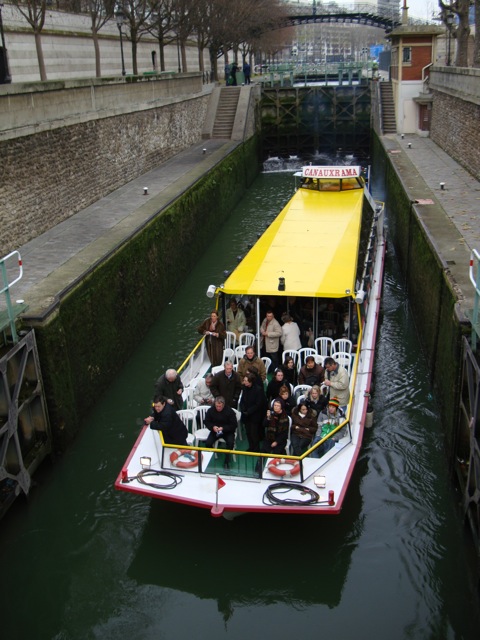
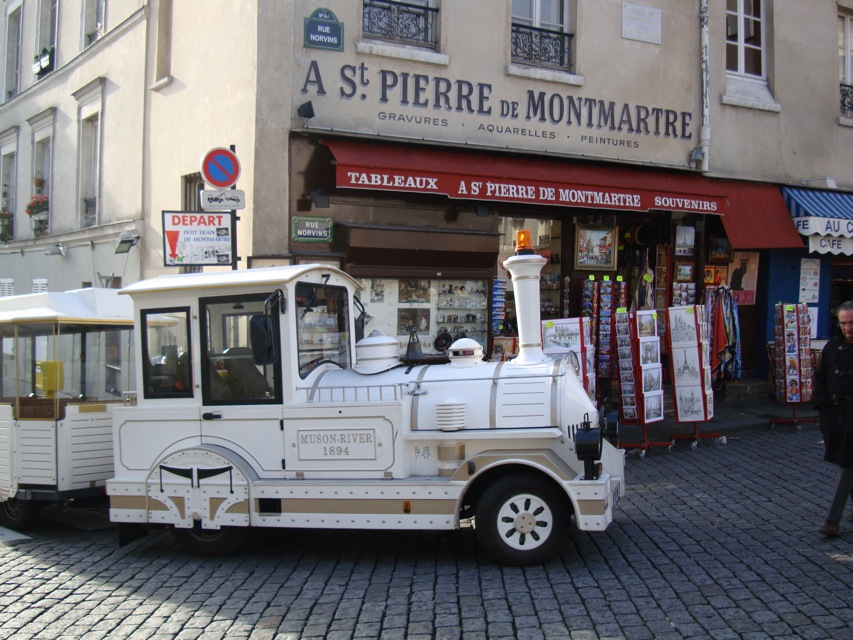
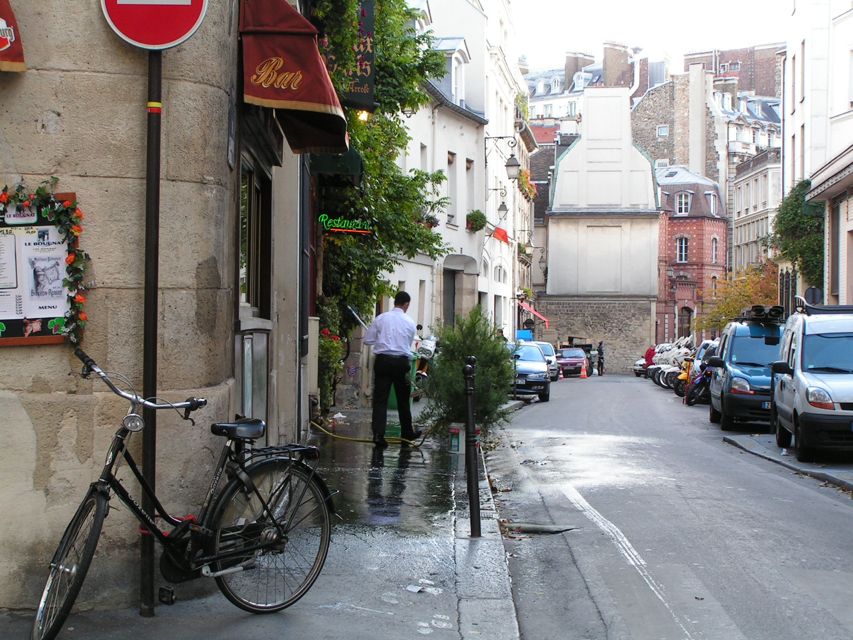
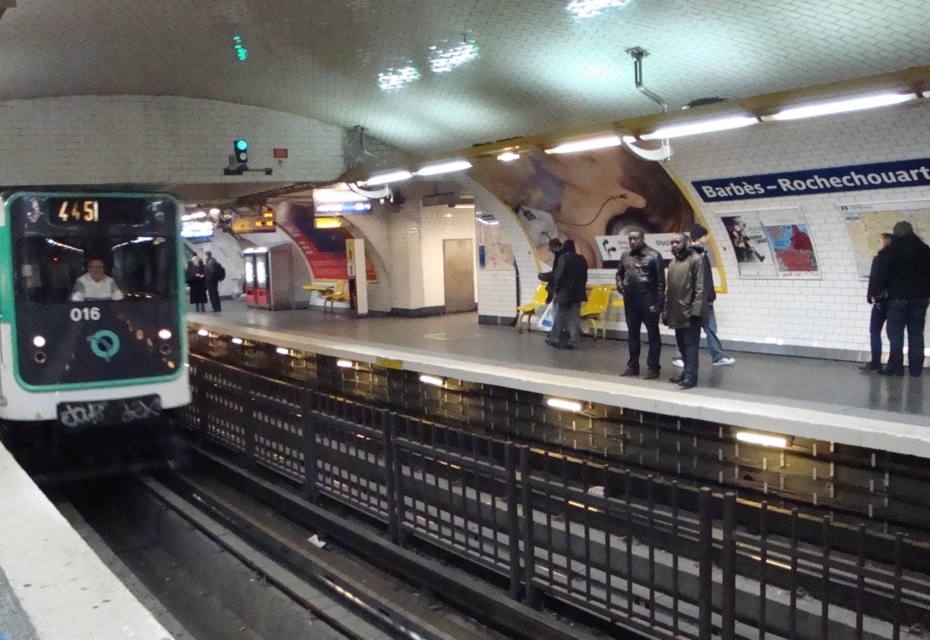 The Paris metro is one of the oldest and one of the best systems in the world, right up there with London and New York. There are around 300 stations connected by nearly 300 kilometers
of track. You can get within a couple blocks of anywhere you want to go. The metro runs from 5am to 12:30am and for the price
of a ticket you can ride around all day long if you like. (as long as you don't leave the system). Tickets can be bought at the ticket booth in the station one at a time, by ten or by 1-day, 2-day, 3-day, 5-day, Le Paris Viste tickets for tourists. There are also weekly and monthly tickets called the Carte Orange. It's a travel pass good for unlimited travel on the paris metro and bus network. You need a passport photo to buy this, but if you use the metro a lot it's worth it. (more that
6-8 times a day). When you use your tickets stick it in the turnstyle slot and then take it when it is returned to you and keep it with you during your trip. Occasionally the check and getting caught without one can be embarrassing as well as expensive. You can get metro maps at the stations and they are posted all over the system. You can also find them in most of the guidebooks though some are so small you will need a magnifying glass. If you can master the Paris metro system you will travel around the city
in confidence and never want to leave. The maps are color-coded so all you have to do is find the station you want to go to and find the line that goes there and see what the final destination for that train is. Then follow the signs for that destination and when the train comes get on and just remember to get off at your stop. Here's a
The Paris metro is one of the oldest and one of the best systems in the world, right up there with London and New York. There are around 300 stations connected by nearly 300 kilometers
of track. You can get within a couple blocks of anywhere you want to go. The metro runs from 5am to 12:30am and for the price
of a ticket you can ride around all day long if you like. (as long as you don't leave the system). Tickets can be bought at the ticket booth in the station one at a time, by ten or by 1-day, 2-day, 3-day, 5-day, Le Paris Viste tickets for tourists. There are also weekly and monthly tickets called the Carte Orange. It's a travel pass good for unlimited travel on the paris metro and bus network. You need a passport photo to buy this, but if you use the metro a lot it's worth it. (more that
6-8 times a day). When you use your tickets stick it in the turnstyle slot and then take it when it is returned to you and keep it with you during your trip. Occasionally the check and getting caught without one can be embarrassing as well as expensive. You can get metro maps at the stations and they are posted all over the system. You can also find them in most of the guidebooks though some are so small you will need a magnifying glass. If you can master the Paris metro system you will travel around the city
in confidence and never want to leave. The maps are color-coded so all you have to do is find the station you want to go to and find the line that goes there and see what the final destination for that train is. Then follow the signs for that destination and when the train comes get on and just remember to get off at your stop. Here's a 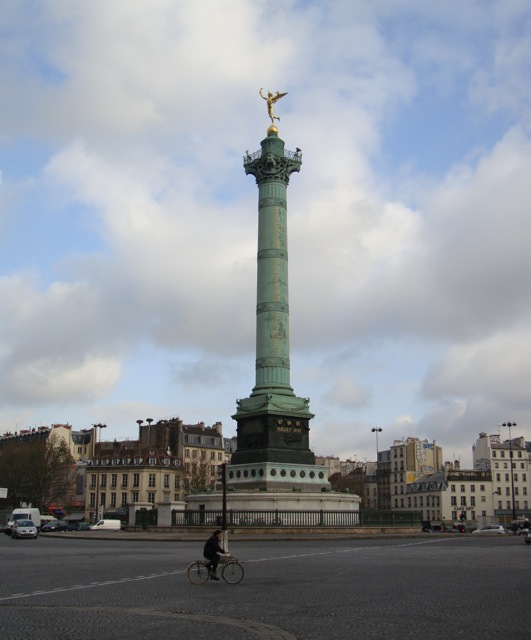 People driving to Paris are advised to leave their cars somewhere on the edge of town and forget about them. You won't need a car
in the city
and even if you do, driving can be a terror to the uninitiated. Parking is even worse unless you are willing to pay to park your car in an underground lot near where you are staying. You can also find some hotels that have parking. If you want to park on the street you will need a Paris Carte since the parking meters do not take coins. But it is not a good long term option since it costs about 2 euros an hour and you are limited to two hours. Car rentals are usually for a minimum
of three days so save your day trips outside Paris for one long stretch and turn them into overnights if you feel you need to use a car. Otherwise take the trains or do a tour. Bikes can be rented and there is a map of the bike routes through the city available at tourist offices and bike shops. If you are planning to cycle the countryside outside of the city it is best to rent a bike at your destination rather then renting one in the city and riding out. There are bikes available at a number of train
stations. For more information on cycling in Paris contact the Federation of Cyclotourisme at
People driving to Paris are advised to leave their cars somewhere on the edge of town and forget about them. You won't need a car
in the city
and even if you do, driving can be a terror to the uninitiated. Parking is even worse unless you are willing to pay to park your car in an underground lot near where you are staying. You can also find some hotels that have parking. If you want to park on the street you will need a Paris Carte since the parking meters do not take coins. But it is not a good long term option since it costs about 2 euros an hour and you are limited to two hours. Car rentals are usually for a minimum
of three days so save your day trips outside Paris for one long stretch and turn them into overnights if you feel you need to use a car. Otherwise take the trains or do a tour. Bikes can be rented and there is a map of the bike routes through the city available at tourist offices and bike shops. If you are planning to cycle the countryside outside of the city it is best to rent a bike at your destination rather then renting one in the city and riding out. There are bikes available at a number of train
stations. For more information on cycling in Paris contact the Federation of Cyclotourisme at 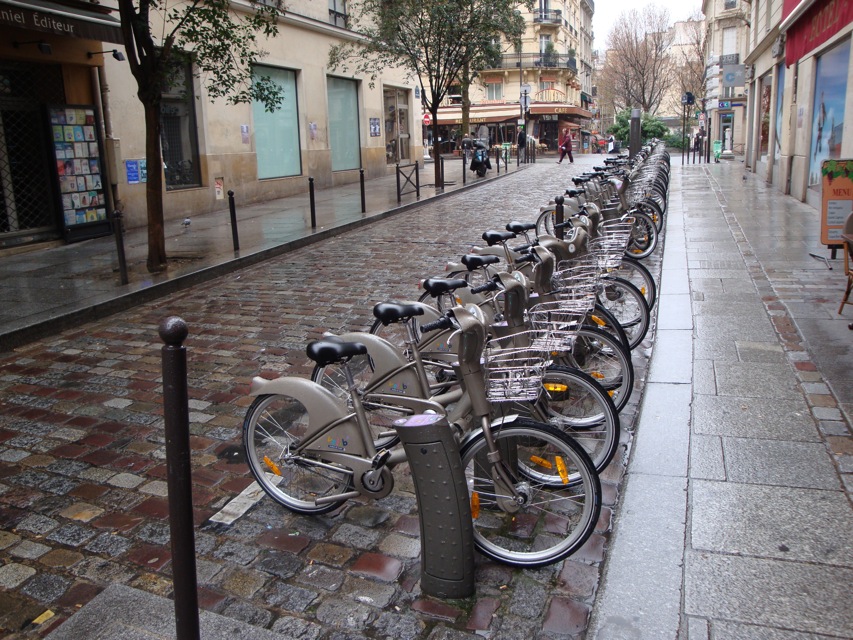 The City of Paris operates the Vélib bicycle rental program using three-speed unisex bikes which you can pick up at stations or "service points" scattered around the
city. You
can pick up a bike at any Vélib' station and return it at any other. You will need
a bank card that is compatable with their system which is most likely the credit card you are carrying, visa, mastercard etc. The 1 day ticket costs-1€ or the 7 day ticket which costs 5€ entitles you to an unlimited number of journeys throughout the entire period of your subscription, the first 30 minutes of each journey being automatically free of charge.
Unfortunately of the 15,000 bicycles originally disbursed for the program, more than half have disappeared and many have been destroyed by adolescent Parisians who use them for stunts, driving down stairways and other selfish acts. So much for the youth of Europe embracing the green revolution.
The City of Paris operates the Vélib bicycle rental program using three-speed unisex bikes which you can pick up at stations or "service points" scattered around the
city. You
can pick up a bike at any Vélib' station and return it at any other. You will need
a bank card that is compatable with their system which is most likely the credit card you are carrying, visa, mastercard etc. The 1 day ticket costs-1€ or the 7 day ticket which costs 5€ entitles you to an unlimited number of journeys throughout the entire period of your subscription, the first 30 minutes of each journey being automatically free of charge.
Unfortunately of the 15,000 bicycles originally disbursed for the program, more than half have disappeared and many have been destroyed by adolescent Parisians who use them for stunts, driving down stairways and other selfish acts. So much for the youth of Europe embracing the green revolution. 
